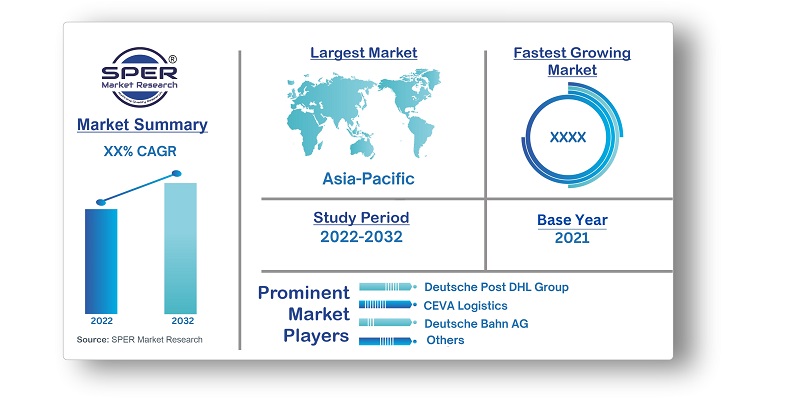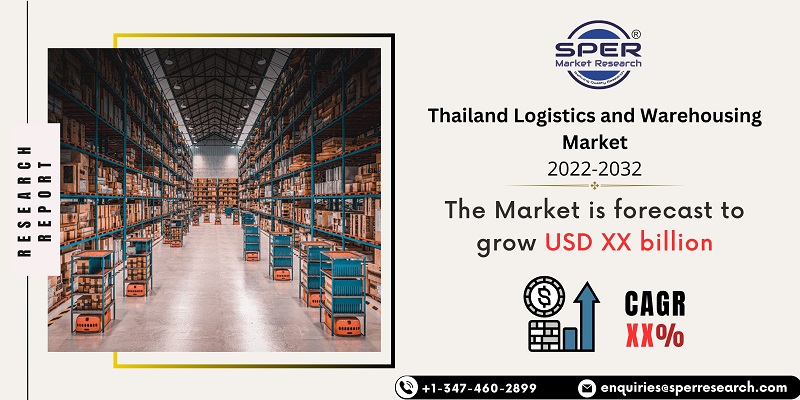
Thailand Logistics and Warehousing Market Growth, Size, Revenue, Competition and Future Scope
Thailand Logistics and Warehousing Market Size-By Function, By End User- Regional Outlook, Competitive Strategies and Segment Forecast to 2032
| Published: Mar-2023 | Report ID: AMIN2344 | Pages: 1 - 104 | Formats*: |
| Category : Automotive & Transportation | |||
- Thailand's strategic location in the center of Southeast Asia makes it an attractive logistical hub for regional and international trade. The country serves as a gateway to key Asian markets, including China, India, and the ASEAN area. Its closeness to key shipping routes and well-developed transportation infrastructure allows for effective connectivity and multimodal mobility.
- Government Initiatives: To improve the logistics and warehousing sector, the Thai government has established a number of policies and initiatives. Infrastructure development projects, investment incentives, and expedited customs procedures are among them. Furthermore, the government's Eastern Economic Corridor (EEC) project seeks to convert Thailand's eastern area into a leading economic zone, attracting international investment and increasing need for logistical services.


| Report Metric | Details |
| Market size available for years | 2019-2033 |
| Base year considered | 2022 |
| Forecast period | 2023-2033 |
| Segments covered | By Function, By End User |
| Regions covered | Northern, Northeastern, Central, Southern |
| Companies Covered | Deutsche Post DHL Group, CEVA Logistics, Deutsche Bahn AG, Kerry Logistics Network Limited, Yusen Logistics Co. Ltd., FedEx Corporation, Nippon Express Co. Ltd., DSV Panalpina, Yamato Transport. |
- Manufacturers
- Retailers
- Logistics Service Providers
- E-commerce Companies
- Freight Forwarders
- Third-party logistics
- Government Organization
| By Function: |
|
| By End User: |
|
- Thailand Logistics and Warehousing Market Size (FY’2022-FY’2032)
- Overview of Thailand Logistics and Warehousing Market
- Segmentation of Thailand Logistics and Warehousing Market By Function (Freight Transport, Freight Forwarding, Warehousing, Value-added Services and Other Services)
- Segmentation of Thailand Logistics and Warehousing Market By End User (Manufacturing and Automotive, Oil and Gas, Mining and Quarrying, Agriculture, Fishing and Forestry, Construction, Distributive Trade, Healthcare and Pharmaceuticals, Others)
- Statistical Snap of Thailand Logistics and Warehousing Market
- Expansion Analysis of Thailand Logistics and Warehousing Market
- Problems and Obstacles in Thailand Logistics and Warehousing Market
- Competitive Landscape in the Thailand Logistics and Warehousing Market
- Impact of COVID-19 and Demonetization on Thailand Logistics and Warehousing Market
- Details on Current Investment in Thailand Logistics and Warehousing Market
- Competitive Analysis of Thailand Logistics and Warehousing Market
- Prominent Players in the Thailand Logistics and Warehousing Market
- SWOT Analysis of Thailand Logistics and Warehousing Market
- Thailand Logistics and Warehousing Market Future Outlook and Projections (FY’2022-FY’2032)
- Recommendations from Analyst
1.1. Scope of the report1.2. Market segment analysis
2.1 Research data source
2.1.1 Secondary data2.1.2 Primary data2.1.3 SPER’s internal database2.1.4 Premium insight from KOL’s
2.2 Market size estimation
2.2.1 Top-down and Bottom-up approach
2.3 Data triangulation
4.1. Driver, Restraint, Opportunity and Challenges analysis
4.1.1 Drivers4.1.2 Restraints4.1.3 Opportunities4.1.4 Challenges
4.2. COVID-19 Impacts of the Thailand Logistics and Warehousing Market
5.1. SWOT analysis
5.1.1 Strengths5.1.2 Weaknesses5.1.3 Opportunities5.1.4 Threats
5.2. PESTEL analysis
5.2.1 Political landscape5.2.2 Economic landscape5.2.3 Social landscape5.2.4 Technological landscape5.2.5 Environmental landscape5.2.6 Legal landscape
5.3. PORTER’S five forces analysis
5.3.1 Bargaining power of suppliers5.3.2 Bargaining power of Buyers5.3.3 Threat of Substitute5.3.4 Threat of new entrant5.3.5 Competitive rivalry
5.4. Heat map analysis
6.1 Thailand Logistics and Warehousing Market Manufacturing Base Distribution, Sales Area, Product Type6.2 Mergers & Acquisitions, Partnerships, Product Launch, and Collaboration in Thailand Logistics and Warehousing Market
7.1 Freight Transport
7.1.1 Road7.1.2 Shipping
7.1.3 Air7.1.4 Rail
7.2 Freight Forwarding7.3 Warehousing7.4 Value-added Services and Other Services
8.1 Manufacturing and Automotive8.2 Oil and Gas, Mining and Quarrying8.3 Agriculture, Fishing and Forestry8.4 Construction8.5 Distributive Trade(Wholesale and Retail)8.6 Healthcare and Pharmaceutical8.7 Others
9.1 Thailand Logistics and Warehousing Market Size and Market Share by Region (2019-2025)9.2 Thailand Logistics and Warehousing Market Size and Market Share by Region (2026-2032)9.3 Northern9.4 North-eastern9.5 Central9.6 Southern
10.1 Deutsche Post DHL Group
10.1.1 Company details10.1.2 Financial outlook10.1.3 Product summary10.1.4 Recent developments
10.2 CEVA Logistics
10.2.1 Company details10.2.2 Financial outlook10.2.3 Product summary10.2.4 Recent developments
10.3 Deutsche Bahn AG
10.3.1 Company details10.3.2 Financial outlook10.3.3 Product summary10.3.4 Recent developments
10.4 Kerry Logistics Network Limited
10.4.1 Company details10.4.2 Financial outlook10.4.3 Product summary10.4.4 Recent developments
10.5 Yusen Logistics Co. Ltd.
10.5.1 Company details10.5.2 Financial outlook10.5.3 Product summary10.5.4 Recent developments
10.6 FedEx Corporation
10.6.1 Company details10.6.2 Financial outlook10.6.3 Product summary10.6.4 Recent developments
10.7 Nippon Express Co. Ltd.
10.7.1 Company details10.7.2 Financial outlook10.7.3 Product summary10.7.4 Recent developments
10.8 DSV Panalpina
10.8.1 Company details10.8.2 Financial outlook10.8.3 Product summary10.8.4 Recent developments
10.9 Yamato Transport
10.9.1 Company details10.9.2 Financial outlook10.9.3 Product summary10.9.4 Recent developments
SPER Market Research’s methodology uses great emphasis on primary research to ensure that the market intelligence insights are up to date, reliable and accurate. Primary interviews are done with players involved in each phase of a supply chain to analyze the market forecasting. The secondary research method is used to help you fully understand how the future markets and the spending patterns look likes.
The report is based on in-depth qualitative and quantitative analysis of the Product Market. The quantitative analysis involves the application of various projection and sampling techniques. The qualitative analysis involves primary interviews, surveys, and vendor briefings. The data gathered as a result of these processes are validated through experts opinion. Our research methodology entails an ideal mixture of primary and secondary initiatives.



Frequently Asked Questions About This Report
PLACE AN ORDER
Year End Discount
Sample Report
Pre-Purchase Inquiry
NEED CUSTOMIZATION?
Request CustomizationCALL OR EMAIL US
100% Secure Payment






Related Reports
Our Global Clients
Our data-driven insights have influenced the strategy of 200+ reputed companies across the globe.






















